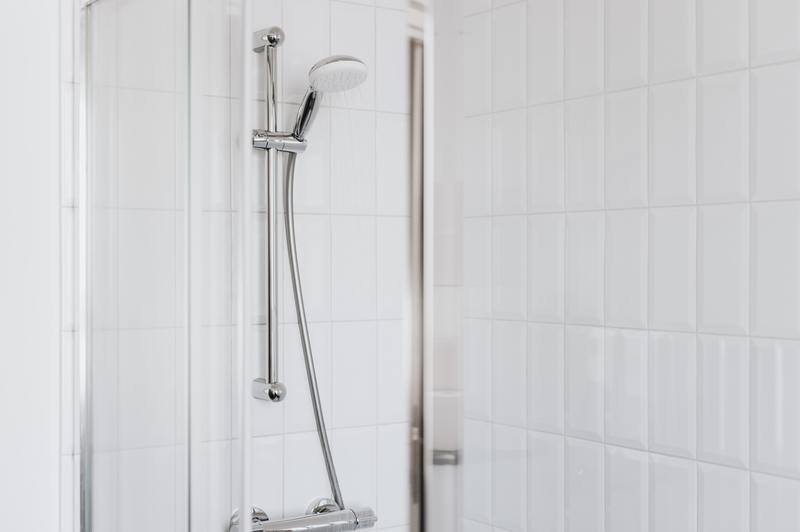Mold and mildew like wet and moist surfaces, so it should be no surprise that you need to learn how to remove mildew from shower grout, just like on every other part of your house. Since they are pretty persistent, they can take root even in the farthest corner of your estate.
As a type of mold, mildew grows spores used by its fungi to multiply and spread into new locations. Since these spores are like a plant’s seed, they rely on mediums like air to carry them to suitable spots, with some capable of dormancy until such an environment is reached.

More often than not, the environment required by mildew(temperature, moisture, absence of light, etc.) is present in your bathroom, which is why you may see some of them growing there.
Steps For Removing Mildew In Shower Grout
Whether on the floor or walls, the grout in your shower is always susceptible to dirt and its accumulation. Since you’re using it regularly, maintaining its state and cleanliness must be in your schedule.
If it gets fungal masses, like mildew, here are some steps to remove them thoroughly:
Step #1. Gather all the tools you need
For every process, whether it’s creation, maintenance, or cleaning, in this case, it’s best to jump-start yourself by making everything you’ll need available nearby. For this mildew in the grout, you’ll need a sponge, brush, vinegar and baking soda, a spray bottle, and a window wiper.
Make sure you also wear a mask for dust and vapor and gloves if you’re allergic.
After collecting all those things, place them nearby first. The next thing you must do is empty your bathroom; take out all unnecessary stuff for the cleaning process.
Step #2. Reduce the mildew masses
If the shower room of concern is one that you use every day, then we’ll assume that there’s only a small amount of mildew masses around. However, if it’s a bathroom that hasn’t been used for a while, you should vacuum the mildew off first if it’s dry and thick.
You can also take your sponge, wet it with soapy water first, then wipe the area to reduce the amount of mildew in the tiles. Doing so will give you a better vision of all the grout infected with mildew.
Avoid wetting the grout too much, though. You wouldn’t want the mildew and its spores to soak the grout further and deeper after all.
Step #3. Remove the mildew
Now to the main step, mix a 50% vinegar solution with water and transfer it to the spray bottle. You can make a more concentrated solution; however, you’ll have to rinse that more to take off the smell.
Spray the solution on the grout with mildew first, then to the rest of the grout in the room. Let it soak there for at least 15 minutes before brushing, so it can reach the entire volume of the grout.
Vinegar is a good solution for cleaning the grout, so you might as well apply it to all of them in the shower room.
Step #4. Apply the baking soda, rinse and dry
After the vinegar solution, you can wash the grout with soap and water first if the smell is too much. After rinsing, use the window wiper to drain as much water away from the tiles and grout.
Mix enough volume of baking soda with water to create a liquid solution and place it on the grout. This will help with any stain and clear any oil on the grout and kill leftover mildew.
Rinse the bathroom with water, use the wiper to remove any stagnant water, and let all the surface dry before returning the amenities.
Here’s an article on how to get rid of mildew smell naturally to level up your mildew removal process.
Can you make tile grout white again?
Yes, you can reinstate your grout’s original color before as long as the stains on it haven’t been there for too long. Vinegar and baking soda are some of the helpful solutions in cleaning your grout, not only for mildew but other dirt, scum, and bacterial mess as well.
There can be stains that require more intense cleaning, for which you can use bleach or hydrochloric acid a limited number of times. If the stains you’re dealing with are dyes or paint, then replacement might just cost less and require less energy from you.
How often should you clean your tile grout?
Ideally, you need to clean your shower grout and bathroom, as a whole, daily to keep yourself clean as well. You can do that with a sponge and suitable shower cleaner, and wipe every day before or after bath.
After all, the stuck oils and specks of dirt invite the mildew spores to take root, so keeping the room neat all the time will also lessen the need for intense cleaning. It would be best to scrub and deep clean your bathroom weekly since grout is porous and readily absorbs water and whatever it’s carrying.
You can read this article on how to remove mildew from bathroom ceiling to complete your bathroom cleansing duty.
Conclusion
We’re done! You have now fully learned how to remove mildew from shower grout as well as keep your shower room clean.
If you keep cleaning, a good habit should keep the mildew away.
